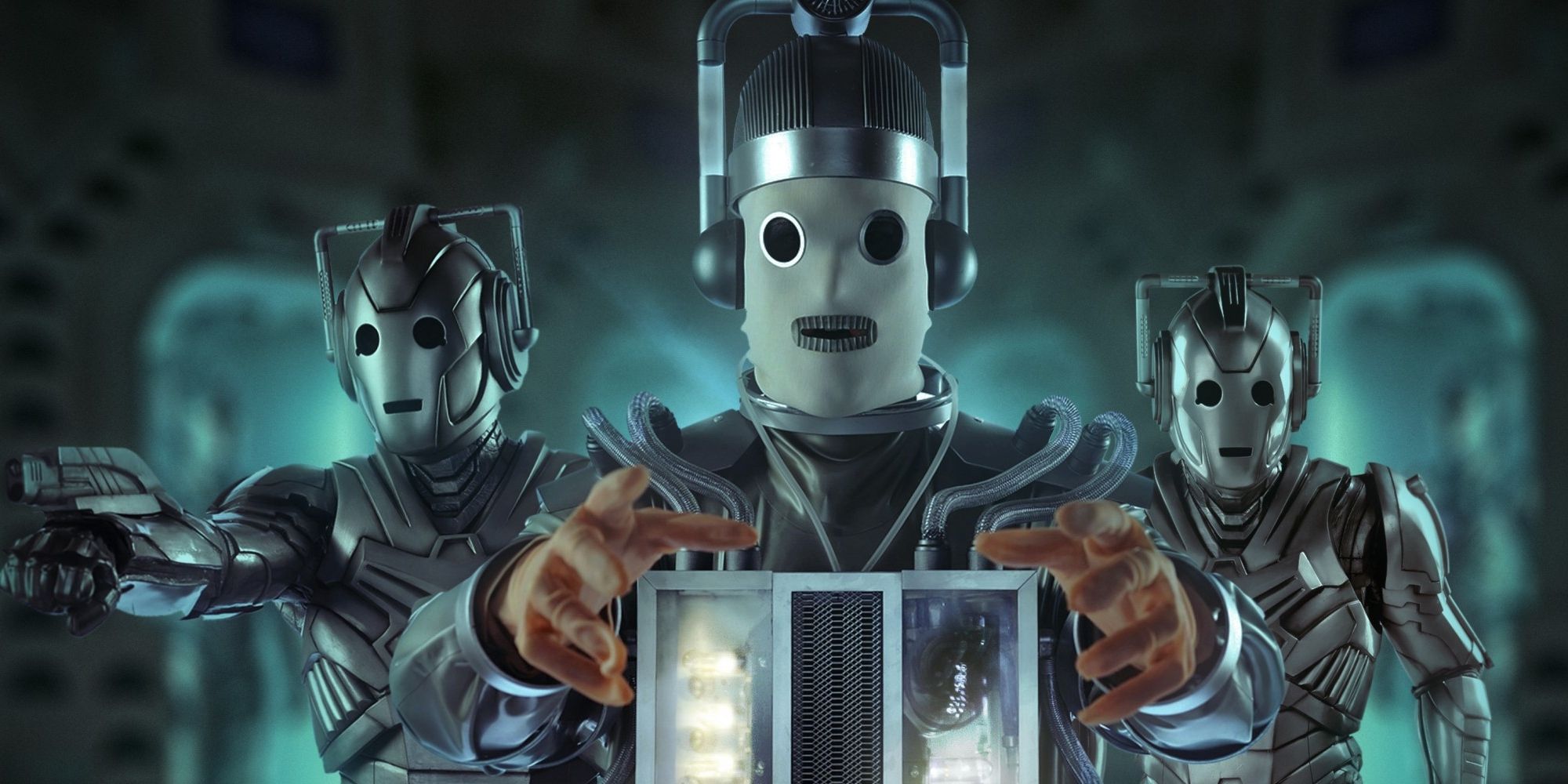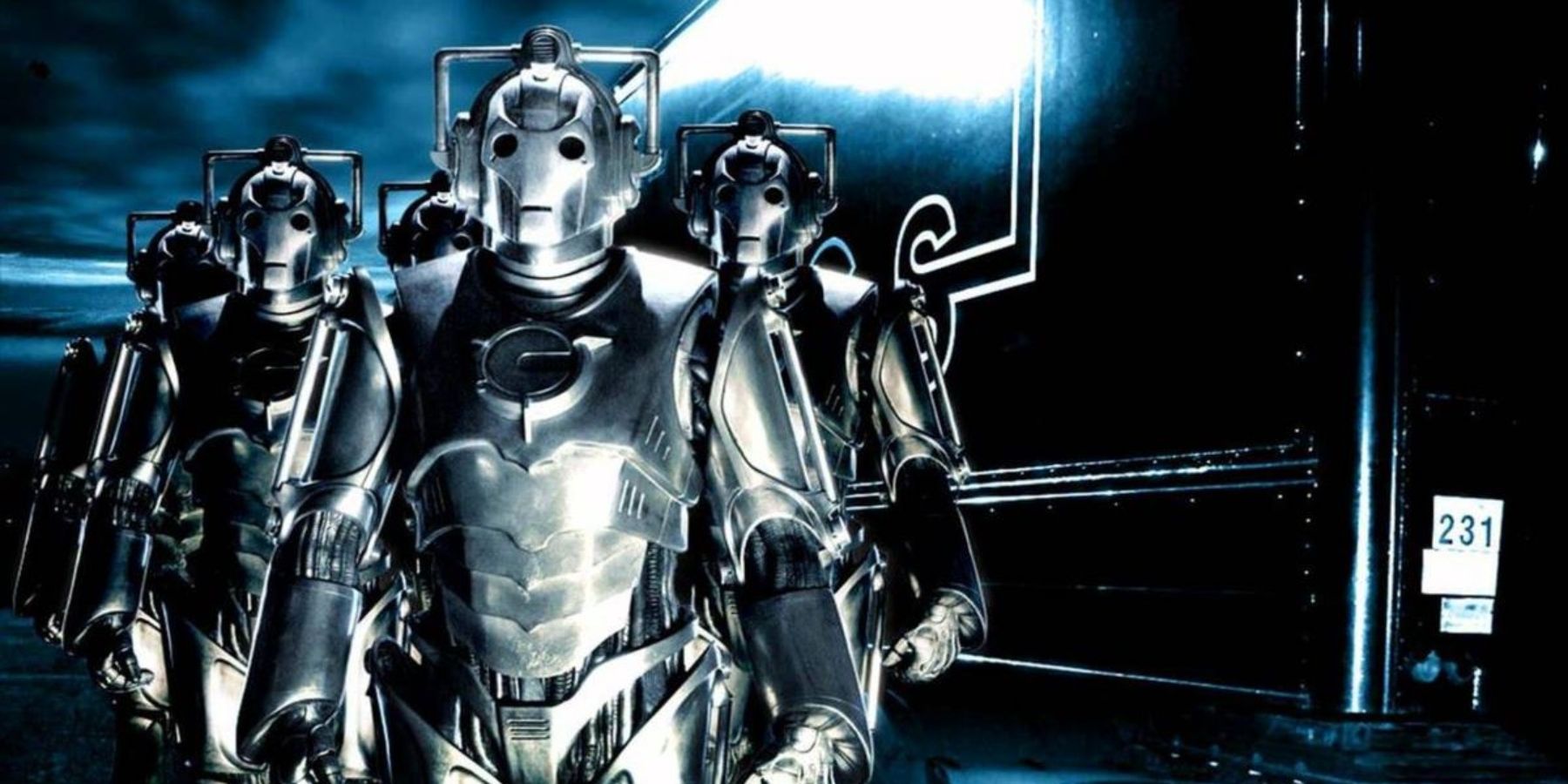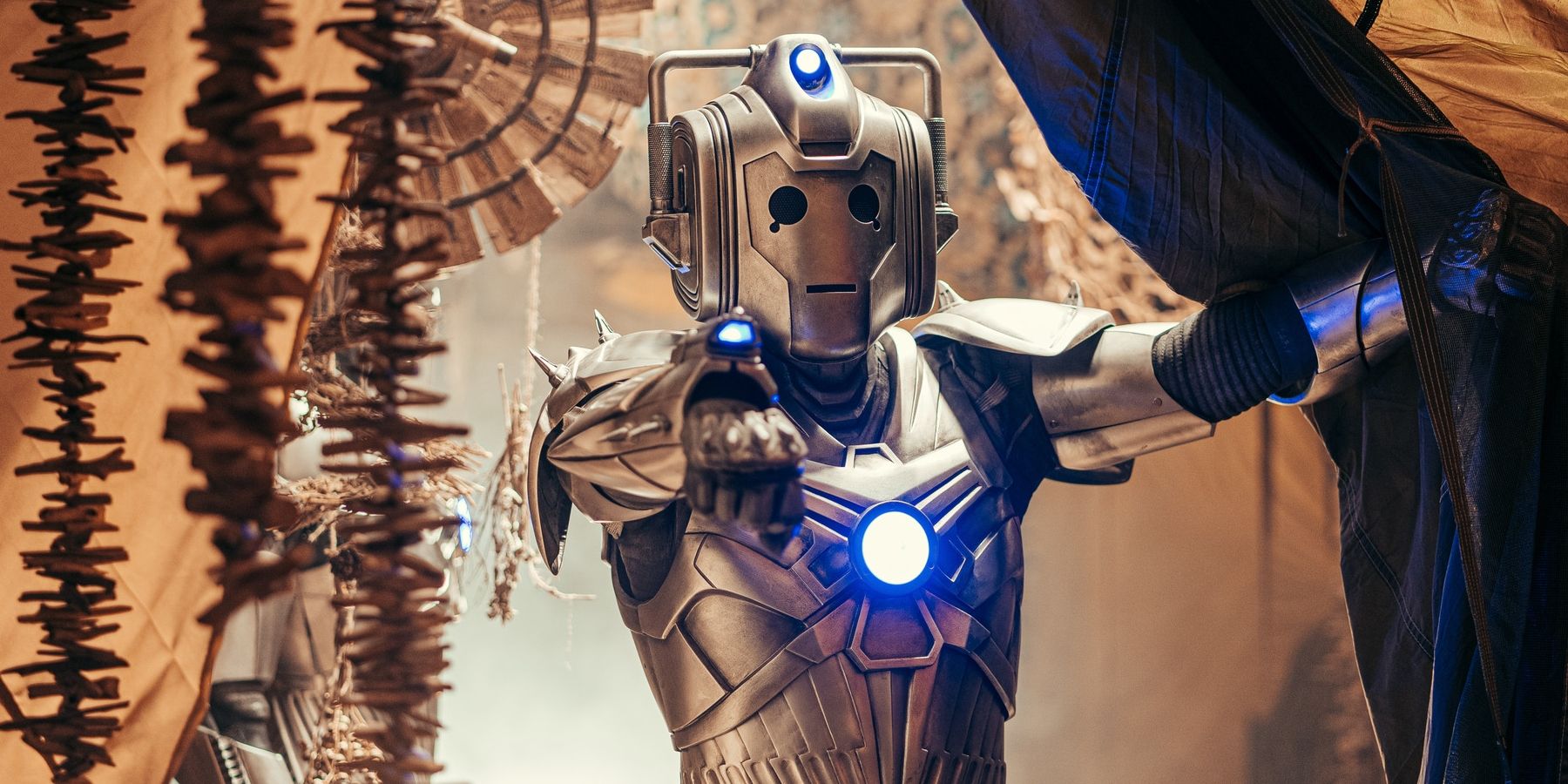Out of all the many memorable villains who have appeared in Doctor Who, there are a select few who have stood the test of time as some of the most iconic enemies in the series — the Daleks of course being the most prominent of these, followed by the Master. But there’s another prominent group of Doctor Who monsters that deserve that same level of recognition, even if they don’t always get it from the series itself: and that, of course, is the legion of mechanical menaces known as the Cybermen.
The Cybermen first appeared in the 1966 serial “The Tenth Planet”, in which William Hartnell’s First Doctor regenerated into the Second Doctor (Patrick Troughton). The story introduced the Cybermen as the humanoid inhabitants of the planet Mondas, who converted themselves into emotionless, faceless, cyborgs for the sake of survival. Right away, their debut establishes them as beings of cold, ruthless logic who wish to transform all of humanity into more Cybermen — a characterization they would retain for the rest of the series.
The original design of the Cybermen may seem a bit silly by today’s standards, but the core concept behind the monsters — a version of humanity that lost its soul — resonated well enough with both the viewers and writers of the series that the Cybermen that they would reappear the very next year as the main antagonists in both “The Moonbase” and “The Tomb of the Cybermen”. The Cybermen would go on to menace the Fourth Doctor in “Revenge of the Cybermen”, the Fifth Doctor in “Earthshock”, the Sixth Doctor in “Attack of the Cybermen”, and the Seventh Doctor in “Silver Nemesis”.
Once Doctor Who returned from its long hiatus in 2005, fans eagerly awaited the return of the Cybermen to TV. And while the Series 1 episode “Dalek” provided a small teaser in the form of a Cyberman head in Henry Van Statten’s alien museum, no actual living Cybermen would appear until Series 2 of the revived series. But when the iconic villains did return, they did so with plenty of fanfare. The two-part story “Rise of the Cybermen” and “The Age of Steel” features the Tenth Doctor (Jessica Jones and Good Omens star David Tennant) and his companion Rose (Billie Piper) being trapped in a parallel universe where Cybus Industries is the most powerful corporation in the world. Cybus CEO John Lumic (played by Roger Lloyd Pack, better known as Barty Crouch Sr. in Harry Potter — where David Tennant appeared as his son), due to his fear of death, has been conducting illegal experiments to transform humans into immortal cyborgs. Inevitably, this leads to the creation of a new iteration of the Cybermen, much to the Doctor’s horror.
“The Age of Steel” shows off how truly terrifying the Cybermen can be when used to their full potential by highlighting their lost humanity. It focuses on the chilling implications of people having their emotions and individuality forcibly stripped away, trapping their minds in cold metal shells for all eternity. One memorable scene features the Doctor speaking with a Cyberman whose emotional inhibitor has been deactivated, realizing that she was a young woman who was captured the night before her wedding. Tragically, the Doctor is forced to perform a mercy killing to prevent her from being stuck in her current state forever.
The Cybermen introduced in Series 2 had the potential to be some of the all-time great Doctor Who villains. Sure enough, the main plot of the penultimate Series 2 episode, “Army of Ghosts”, focuses on the Cybus Cybermen’s attempt to travel from their home universe into the one the Doctor calls home. That alone would be the perfect setup for a climactic season finale — a full-scale invasion of Earth by a massive Cyberman army. However, the ending of the episode swiftly upstages the threat of the Cybermen by introducing another faction to the battle: the Daleks, thought to be destroyed in the previous season finale “The Parting of the Ways”. And while a battle between the Daleks and the Cybermen is itself an entertaining premise, it comes at the expense of cheapening the threat of the Cybermen themselves. Ultimately, the worldwide Cyberman invasion is treated as a secondary problem compared to the return of the Daleks. And as such, the Cybermen are robbed of the chance to be the undisputed main villains of an entire Series-long arc, like the Daleks before them and the Master after them.
The Cybermen would only appear in one more episode in Russell T Davies’ time as showrunner: “The Next Doctor”, a standalone story with little impact on the overarching plot. Throughout the Eleventh Doctor’s tenure, the Cybermen are relegated to a few minor cameos and two one-off episodes, “Closing Time” and “Nightmare in Silver”, neither of which were particularly well-received by fans. Only with Peter Capaldi’s time as the Twelfth Doctor would the Cybermen once again become a major presence — kind of. The two-part Series 8 finale, “Dark Water” and “Death In Heaven”, features a global invasion by an army of Cybermen with the ability to convert the dead, not just the living. It’s a downright apocalyptic scenario, more dire than anything the Cybermen have accomplished before in the revived series. However, the Cybermen aren’t the actual main antagonists of the episode. That would be the Master (Michelle Gomez), who is using the Cybermen as her own personal army.
The Series 10 finale, “World Enough and Time” and “The Doctor Falls”, features a return to the premise of the Master controlling the Cybermen, with both the Michelle Gomez and John Simm incarnations of the villainous Time Lord teaming up to engineer the initial creation of the Mondasian Cybermen. But unlike last time, the Cybermen rebel against their Masters, causing them to team up with the Doctor. It’s perhaps the best Cybermen story of the revived series, placing them in the role of the ultimate villains at long last while once again emphasizing their horrific nature. The next Cybermen episode, Series 12’s “The Haunting of Villa Diodati” starring Jodie Whittaker’s Thirteenth Doctor, continues this horror-influenced portrayal by featuring a lone Frankenstein-esque Cyberman as its villain. However, the two-part finale “Ascension of the Cybermen” and “The Timeless Children” once again reduces the Cybermen to the mindless lackeys of the Master, now played by Sacha Dhawan.
Despite being the second most iconic monsters in Doctor Who history, the Cybermen can hardly seem to catch a break. Their time in the revived series has mostly featured them either playing second fiddle to other villains or starring in forgettable standalone episodes. And while a handful of stories have been steps in the right direction, they usually go right back to being wasted potential before long. Episodes like “The Age of Steel” and “World Enough and Time” can show how frightening the Cybermen can be when they’re depicted as a twisted vision of humans without humanity, just as they were originally intended to be. But alas, most episodes are content to leave them as generic killer cyborgs — a mistake that future Cybermen stories will hopefully correct.



